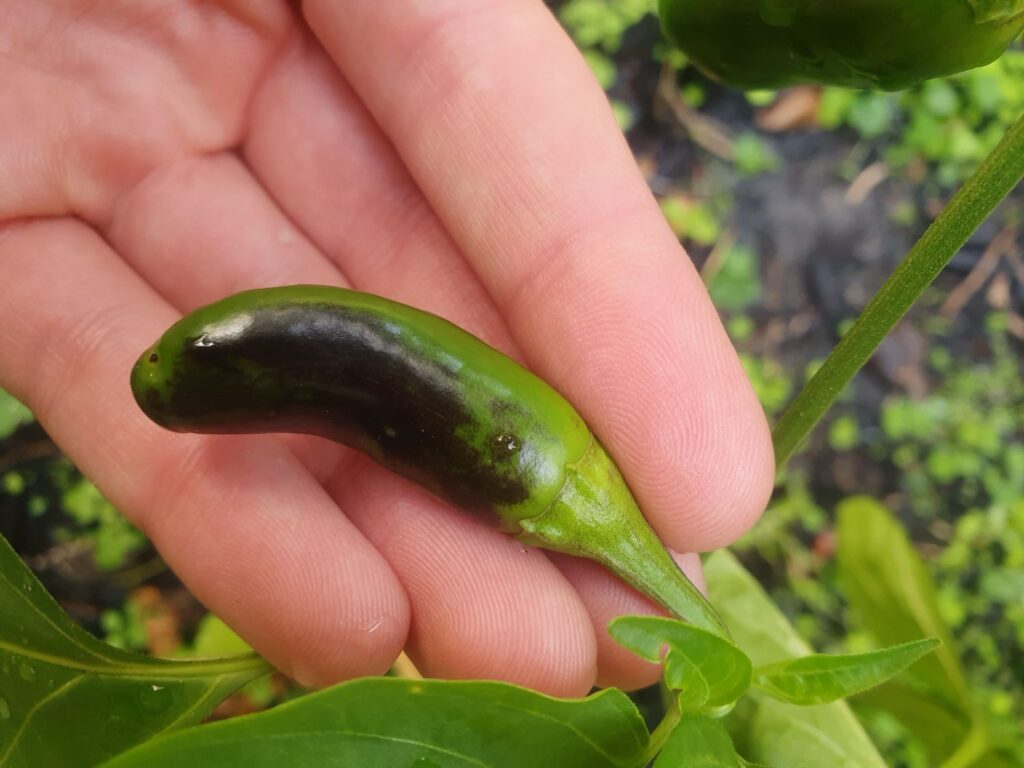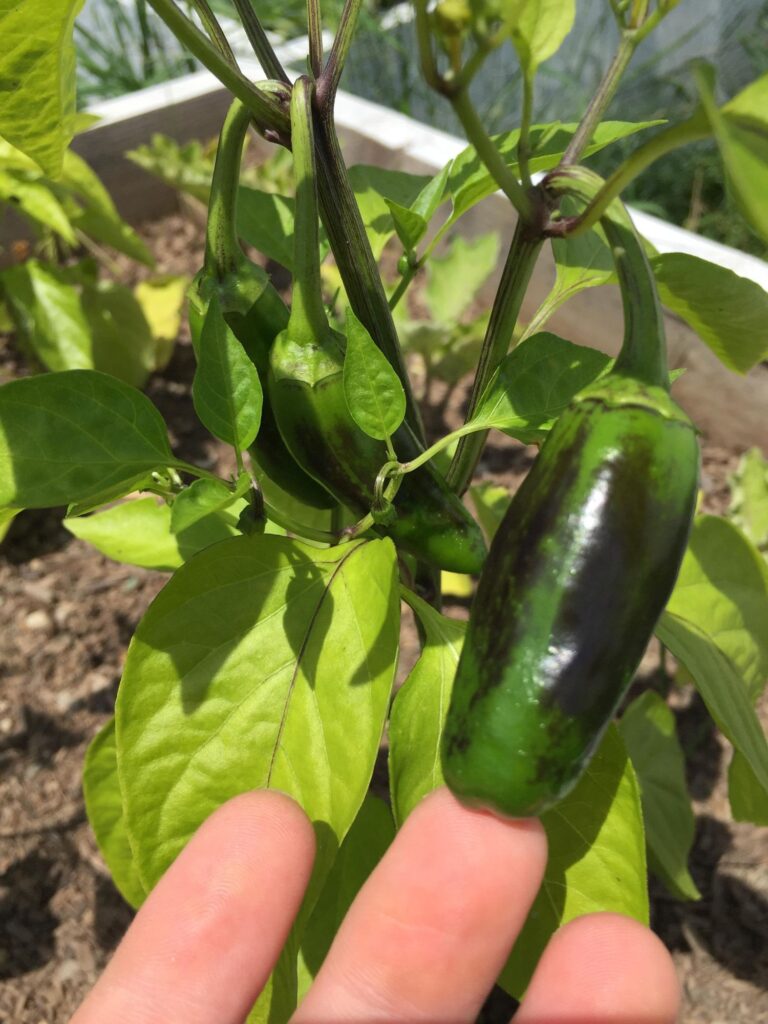Pepper plants, including jalapeno peppers, have been cultivated for so long and are a popular plant to grow! You can grow these as tender annuals when living in cooler climates, though they grow as perennials in USDA hardiness zones 9-11. Usually, these peppers would grow green then ripen and turn red, but what happens if you see them turning black?
This leaves you wondering, ‘why are my jalapeno peppers turning black?’ Read on to find out why this happens and what you can do to stop it from happening again!

Why Are My Jalapeno Peppers Turning Black?
Why are my jalapenos turning black? You aren’t alone in this, as many gardeners also share the similar problem.
Unfortunately, this is a serious issue with various causes. By identifying why it happens, you can remedy the issue and prevent it from happening again. That said, here are the causes behind black jalapeno peppers and what to do about it:
1. Black Rot
Black rot would affect jalapeno peppers that are left on the plant to ripen until they become red. You’ll know the difference between black rot and blossom end rot by where the black mold is located and how old the peppers are.
Black rot would affect fully ripened red peppers, covering parts of the jalapeno besides the blossom ends. This would happen when there is a lot of moisture from rainfall or overwatering around the ripening jalapeno plants.
Prevent this from happening again by keeping your fruits dry and only water the soil around the plant base, which prevents black rot. Unfortunately, you cannot salvage any affected black jalapenos from this. You will need to discard of the jalapenos showing black rot and to avoid leaving any peppers on the plant for long period after they ripen and turn red.
2. Blossom End Rot
Blossom end rot is typically seen in the nightshade family like tomatoes and peppers. You will know if your pepper plant is suffering from this if you see moldy looking spots on the pepper’s blossom mend, which turns black over time.
Blossom end rot isn’t caused by infection, but from calcium deficiency, adverse weather conditions, or improper watering.
What you can do to treat your pepper plant is to mulch around them, which preserves the soil moisture. However, the soil pH levels might create a calcium imbalance, preventing pepper plants from absorbing water from its soil well. You can also amend the soil with limestone until the soil’s pH levels are above 6.0.
That said, you can’t reverse the condition it’s done on the affected peppers. They will remain black and can’t be consumed, so remove them from the plant and discard them properly.
Besides this, I recommend that you prevent overwatering your plants and to keep them away from adverse weather conditions, such as rainy, windy days. Cover them if they are planted outdoors, if possible.
3. Mosaic Virus

Mosaic viruses prevent jalapeno plants from producing properly ripened and formed jalapeno peppers. You will see that the affected peppers have darkened parts, looking smaller compared to unaffected peppers. You might also notice curled leaves with light and dark green areas, as well as stunted plant growth.
There isn’t any treatment to this virus and you will need to dispose of the affected plant immediately to prevent the infection from further spreading. Furthermore, lay down foil for mulch around the plants to prevent any insects from reaching them, as pests may carry viruses.
4. Anthracnose Infection
Anthracnose would cause different parts of jalapeno peppers to blacken. However, these black areas are found along the pepper’s sides rather than the end, as opposed to blossom end rot. Anthracnose is caused by a fungus, which causes watery lesions.
Such spots would show on the plant’s stems, leaves, or peppers, progressing to develop black spots. Unfortunately, you cannot correct anthracnose infections on jalapeno peppers, but you can prevent them from happening.
You can avoid the infection by planting seeds from reputable sources and never plant jalapeno pepper seeds in the same garden beds where other members of the nightshade family were affected by the infection within the past 2 years.
Furthermore, you will need to remove weeds regularly and keep your garden clean to prevent infections like these from happening.
Another infection to watch out for is phytophthora blight, a fungal infection affecting jalapenos. This can cause your jalapeno peppers to turn black while rotting, and it would have similar solutions as plants suffering from an anthracnose infection.
5. It’s the Sun
If ever you notice black jalapenos on your plant, they may be rotten. But at times, they aren’t and are just turning black when exposed to stronger sunlight. Some varieties of jalapenos do that and it’s no cause for alarm.
Furthermore, some varieties would also turn darker before turning red or orange, with some people waiting until these peppers reach this dark color. When it reaches this color, it may taste spicier compared to the green versions.
It’s still possible to consume these peppers, as long as you harvest them at the correct time or they end up being overripe. Speaking of ripening, it’s best to pick your jalapenos before they fully ripen to prevent them from turning black, as mentioned above.
Wrapping It Up
Jalapenos are a favorite among spicy food lovers and are pretty easy to grow, but you can come across a problem or two. If your jalapenos are turning black, it may not be reversible, but you can prevent it from happening again. That way, you can grow and harvest jalapenos to enjoy in the long run, provided that you give them the proper care and love your plants deserve.
I hope that you were able to learn about growing your jalapeno peppers properly for a bountiful harvest. Now that you know why jalapenos turn black on the plant, follow these tips to prevent them from happening. Happy gardening!
I’m still not quite sure if I’ve got an issue with my peppers… seem like some pictures of the variety I have show some black… thoughts?
They are Mucho Nacho variety, they also have some “cracking”?
Growth cracks are a major “plus” for jalapenos. In an age where you have no idea if a jalapeno is hot or a disguised bell pepper, one thing you can be sure of. When jalapeno has growth cracks it has matured to its entirety with a lot of heat. You’ll see Mexican buyers looking for and buying these. Seed producers have evolved the pepper to have more value in appearance than quality of edibility and usefulness. How do I know? I used to raise hundreds of acres of jalapenos and other chilies for most of the salsa makers and the fresh market. The fresh market demands a “pretty” jalapeno without growth cracks. Consequently many tasteless peppers have appeared on the shelves.
Oh, consequently the black marking in the picture on that jalapeno was caused by cool weather in the late fall, not a disease. It happened to us frequently in the late harvest season when the evenings and mornings turned colder. This was explained to me by several seed breeders from different seed companies. Although it appears unsightly, it doesn’t affect the edibility of the pepper.